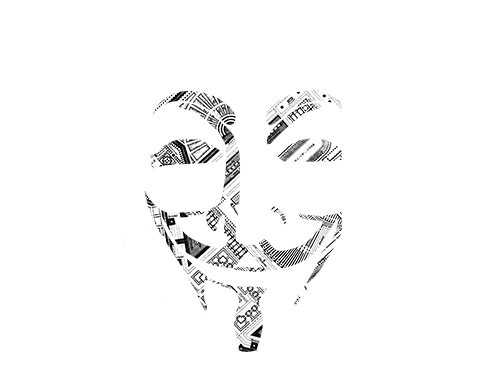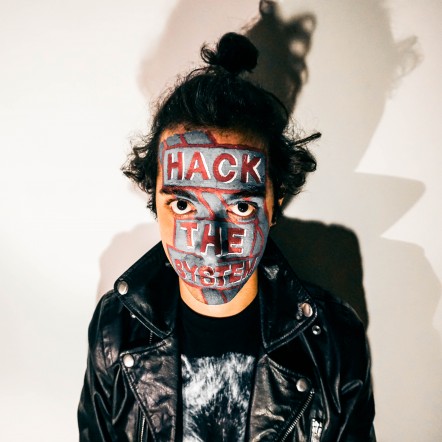Urban Hack is a movement for people to reclaim their cities. The streets, the squares and all the public spaces belong to the people, to everyone. The public space is not a network of consumerist relations formed to maximise the benefit of multinational corporate giants under the supervision of authoritarian governments and their armed security forces.

Gezi protestors occupied this building and transformed it into the face of the movement. The AKM building is situated right next to the Gezi Park, looks straight to the Taksim square, the heart of the gatherings. The building is a very important symbol of the Republic and its path towards modernisation. The current AKP government aims to destroy it. Basically, the occupation of the building by the anti-government protestors was inevitable. At first, right in the center top, they put a Turkish flag and Ataturk’s portrait written between them “Don’t submit”. Soon, the wide and flat façade of the building was completely covered with the messages of various groups participating in the movement, such as: “Tayyip Demission”, “Justice or doomsday”, “Tayyip Shut up!”, “Revolutionary youth”. The building was no longer there as a culture center but it existed through its symbolic and political past. The revolutionary memories of the building filled the Taksim square as a volume both vertically and horizontally and let kept the movement alive.
HACK I: Posters and ownership
Transformation of AKM (Ataturk Culture Center)
_URBAN HACK
The barricades that had an important role for the survival of the Gezi Commune were the result of a clever and rapid hacking of the urban space. The sidewalks which are rebuilt every year for no other reason than to make some brother of a politician richer were completely dismantled by the protestors. These sidewalk stones were used as the basic construction material for the Gezi Commune to build its living spaces, recreational spaces and also its protective measures, the barricades. The sidewalk stones combined with metal garbage containers, concrete flower beds and the metal bars from a nearby construction site made the barricades.
Hack II: Sidewalk stones and urban furnitures
Building Protective Measures: Barricades
The Gezi Library
The sidewalk stones were not only used for building protective measures but also living spaces. The Gezi library started with a few shelves built with these stones by some protestors and it got bigger with time. It started as a temporary structure for public service built with public materials but it went beyond that by becoming a wish for the future of the Gezi Park. An idea was born from this simple hack. Instead of the construction of hotels and a shopping mall on the parc, the protestors proposed to keep the parc and build a modest public open library in the heart of the city. This is a clear example of how the simple hacking of urban space only out of urgent necessity by ordinary people can represent a respectable base for an architectural project.

Make-up artist: Elene Shatberashvili
Photo: Laura Pariot
During the Gezi manifestations in Istanbul the youth painted a amount of graffitis and slogans on the buildings. These slogans on the buildings were a sign of the change of its ownership and its function as well as its politisation. The building itself and its past is no longer relevant. All is united under the anonymity of the message.
Action I: Hack The System!
Photo: François Pouriatz
Just as the buildings, the protestors as well unite under the anonymity of the message.
All ready to go out and hack the city!
CASE STUDY
GEZI PARK PROTESTS
ISTANBUL, 2013
ACTION I
HACK THE SYSTEM
ACTION II
#KEEPANEYE
The Free Tribune
Materials:
- Sidewalk stones
- Metal garbage containters
- Concrete flower beds
- Scaffolding bars
- Wood tables
Materials:
- Two kinds of sidewalk stones
The police barricades and street signs were used to build a free tribune. Elements of limitation and prohibition were transformed to make a place of freedom where every one could speak his mind.
Materials:
- Police barricades
- Street signs
- Wood table
EN COURS...
STOP MOTION VIDEO
Je suis en train de faire ce vidéo qui montre les étapes et les moyens d'occupation de l'espace public par le peuple.
J'ai construit une rue fictive inspirée de la rue de Istiklal où se passaient les manifestations. La trame et la géométrie pure représentent la ville développé autour de notre modèle économique capitaliste sous l'autorité du pouvoir politique. On va avoir aussi les mesure de surveillance et de sécurité mise sur place par le gouvernement, les caméra et les polices.. Cette rue va se transformer complètement en plusieurs étapes ac les barricades en terre pendant l'occupation, des graffitis politique pendant la revendication et puis le feu pendant le conflit avec la force armée du gouvernement.